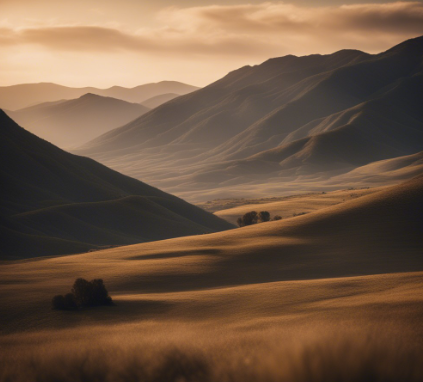The Earth’s Surface: Mountains, Plains, and Valleys

The Earth’s surface is a canvas painted with a breathtaking array of landforms, each with its unique features and geological history. From towering mountains that touch the skies to expansive plains stretching as far as the eye can see and meandering valleys that cradle life, the diversity of our planet’s topography is awe-inspiring. In this article, we will explore the Earth’s surface and delve into the fascinating characteristics of mountains, plains, and valleys.
Mountains: Earth’s Majestic Giants
Mountains are some of the most prominent and awe-inspiring features on Earth’s surface. They are characterized by their significant elevation, steep slopes, and often jagged peaks. Here are some key facts about mountains:
- Formation: Mountains are formed through various geological processes, including tectonic plate collisions, volcanic activity, and erosion. The Himalayas, for example, were created by the collision of the Indian and Eurasian plates.
- Biodiversity: Despite their harsh conditions, mountains support diverse ecosystems and unique species adapted to high altitudes. Alpine plants, snow leopards, and mountain goats are examples of mountain-adapted life forms.
- Water Sources: Mountains play a crucial role in providing freshwater to downstream areas. Snow and glaciers store water, releasing it gradually as it melts, which sustains rivers and ecosystems in lower elevations.
- Tourism: Mountains attract tourists and adventurers from around the world. They offer opportunities for hiking, skiing, and mountaineering, providing a unique connection to nature and breathtaking views.
Plains: Vast, Open Horizons
Plains are extensive, flat or gently rolling landscapes that stretch across large areas. They are often characterized by fertile soil, making them ideal for agriculture. Here are some key aspects of plains:
- Formation: Plains are formed through various geological processes, including the deposition of sediments by rivers and the leveling of land by glaciation.
- Agriculture: Plains are fertile regions that have played a pivotal role in the development of agriculture throughout human history. They provide the space and conditions needed for crop cultivation and livestock grazing.
- Human Settlements: Many of the world’s most populous cities and regions are located on plains due to their accessibility and suitability for habitation. Examples include the Great Plains in North America and the Indo-Gangetic Plain in South Asia.
- Biodiversity: While plains may not have the rugged beauty of mountains, they are home to various ecosystems, including grasslands and wetlands, which support diverse wildlife.
Valleys: Nature’s Sculpted Grooves
Valleys are low-lying areas typically nestled between mountains or hills. They are formed through a variety of geological processes, including erosion, tectonic activity, and glacial movement. Here are some notable features of valleys:
- Types of Valleys: Valleys come in different forms, such as V-shaped valleys carved by rivers, U-shaped valleys shaped by glaciers, and fault valleys formed by tectonic activity.
- Habitat and Agriculture: Valleys often have fertile soil and access to water, making them suitable for agriculture and human settlement. Many historic civilizations, such as the Nile Valley in Egypt, flourished in valley regions.
- Scenic Beauty: Valleys are renowned for their scenic beauty, with picturesque landscapes that attract tourists and outdoor enthusiasts. Yosemite Valley in California and the Rhine Valley in Europe are famous examples.
- Ecological Importance: Valleys are often ecologically important as they serve as corridors for the movement of wildlife and provide habitats for various plant and animal species.
The Earth’s surface is a tapestry of landscapes, each with its unique characteristics and ecological significance. From the towering majesty of mountains to the vast expanses of plains and the intricate beauty of valleys, these landforms shape our world and offer a glimpse into the geological history and natural diversity of our planet. Understanding and appreciating the Earth’s surface features can deepen our connection to the natural world and inspire awe for the wonders of our planet.
















